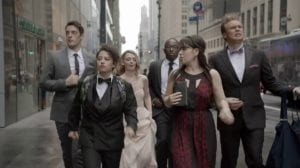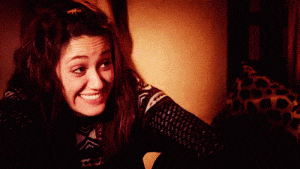At the end of every show binge, I like to look back and reflect on my consumer experience as a whole. When I started Wynonna Earp, I expected to be entertained with the supernatural wild west genre mixture and Canadian wilderness backdrop. After binging the entire show, its safe to say that the show is so much more. For starters, it is so refreshing to watch a show, and something as stereotypically masculine as demon hunting, that sets a perfect and realistic standard of gender representation on television. Never have I ever watched a show where not only was there one strong female protagonist, half the cast was made up of wonderful female characters, each with their own abilities and unique personalities.
Unlike many shows that involve cowboy hats or supernatural entities, the writers of Wynonna Earp also do a great job of keeping the storyline interesting. Although the main characters remain the same throughout the seasons, some characters do leave and other interesting ones are introduced in a way that fits with the storyline. For example, season one was focused more on introducing the town of Purgatory and explaining the backstory of Wynonna and her family and why they were cursed to eliminate demons. However, when the second season rolled around, the focus shifted to a centralized story about the awakening of a century old demon and how the town was changing as a result. Because the general genre often has problems engaging viewers, I am definitely impressed by how well Wynonna Earp kept my attention.
Finally, I really loved the combination of actors, storylines, and humor that the show provided. Each of the characters were well played and had important roles in influencing the storyline. Each storyline was engaging, but everything is always tied to a bigger picture issue. The show may have been about killing demons, but the writers sure knew how to add some dry humor and crack the audience up.

Wynonna before making a tough decision
Overall, I really enjoyed my experience watching Wynonna Earp, and I could not be more excited for the next season to be up on Netflix!








